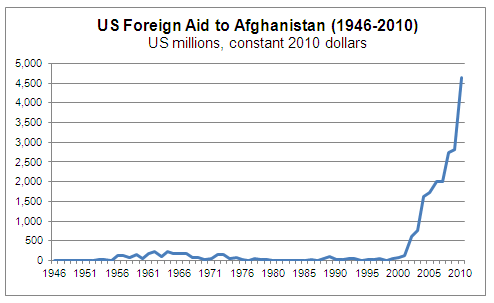
In fiscal year 2012 the U.S. gave $42 billion in aid to 186 countries around the world. But the money was not evenly divided.
While Sub Saharan Africa, which has 49 countries—including 18 of the top 20 poorest in the world—received only $7.2 billion in aid, South and Central Asia (13 countries) received more than twice that, at $15.1 billion.
Most of the aid to South and Central Asia went to just two countries, Afghanistan and Pakistan. Together, they accounted for about $14.02 billion of the $15.1 billion that went to the region, and were among the top recipients of U.S. aid worldwide in 2012.
The bulk of the $12.9 billion in aid to Afghanistan—$9.95 billion—went towards spending on military and security assistance to arm and train Afghan military and police forces.
With U.S. military forces planning for a withdrawal later this year, it remains unclear just how much lasting impact all of that money will have. According to an article published by the Journal of World Affairs in 2013, “The Money Pit: The Monstrous Failure of US Aid to Afghanistan,” the aid has been exactly that, a failure. Since 2002, approximately 100 billion has been appropriated for aid, and “all of that has not brought the United States or Afghanistan a single sustainable institution or program.”
USAID has handed almost every project over to independent contractors, and has failed to monitor those projects’ progress, the Taliban have attacked or bombed hundreds of new schools and buildings, and corrupt government officials find ways to hoard profits from aid for themselves, by, for example, declaring trailers and non-motorized conveyances in a list of vehicles needing fuel supplied by the U.S. In the words of Heather Barr of the Human Rights Watch, the country is a “perfect case study of how not to give aid.”








